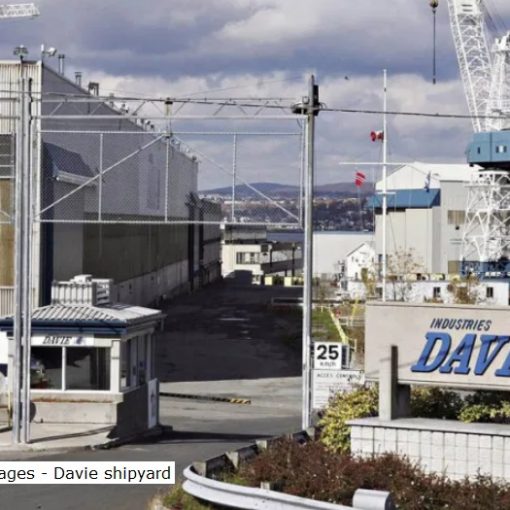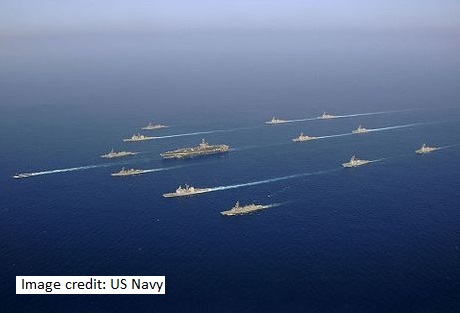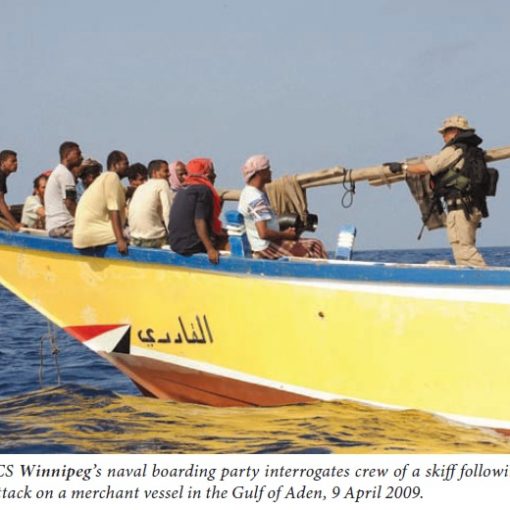*Moderator’s Note: This Canadian Defence and Foreign Affairs Institute op-ed appeared in The Globe and Mail on 13 May 2014. It is reprinted here with the permission of CDFAI.
Lest we forget. On Parliament Hill last week we marked the end of our Afghanistan mission. We also remembered the Battle of the Atlantic.
In what Winston Churchill described as the “dominating factor” of the Second World War, the Royal Canadian Navy and our merchant marine kept open the sea lanes, carrying the vital flow of food, energy and arms to Britain.
Today, Canadians look increasingly to the sea as passage for our own prosperity. Consider:
70 per cent of the world is covered with water;
80 per cent of the globe’s population lives near water; and
90 per cent of what feeds, clothes and fuels us travels by water; an ‘invisible industry’ of a hundred thousand container ships.
With three oceans at our back and the longest coastline in the world, Canada and its economy, observed Prime Minister Stephen Harper, “float on salt water.” On any given day, one third of the inventory of enterprises like Canadian Tire is at sea.
Increasingly, we export more of our resources and food by sea. Potash is shipped to more than 100 markets. Pulse, a multi-billion dollar Canadian industry, ships to 150 markets. Its production has increased fivefold in the last 20 years and it is our biggest export to India.
Once we have east-west pipelines and LNG terminals we can truly be an ‘energy superpower’ shipping our oil and gas across the Pacific and Atlantic. In Europe, our energy can be a strategic alternative to dependence on Russia and the Middle East.
Canadians have long plied North Atlantic and Pacific waters. Now the Arctic is opening. Last September, the Danish-owned Nordic Orion – laden with B.C. coal for Finland – became the first bulk carrier to navigate the North West Passage. That trimmed a thousand miles off the normal Panama Canal route.
Order on our oceans, straits and coastal waters is underwritten by international covenant. Negotiation of the United Nations Convention on Law of the Sea is one of the greatest triumphs of Canadian diplomacy. Canadian jurisdiction was extended to the continental shelf, effectively doubling our ocean estate.
With 40 per cent of our land mass in our northern territories, and 25 per cent of the global Arctic, securing international recognition for Canada’s claim to an extended continental shelf and seabed rights is a national priority.
Our ability to enforce the law and guarantee safe passage depends on naval power. Navies, with air support, can project power over huge distances.
For the last two centuries, first the Royal Navy and then the United States Navy have kept watch over our sea lanes. Now, facing new threats and with domestic financial constraint, President Barack Obama has called on NATO leaders to “step up and carry” their “share of the burden”.
Canada’s armed services need strengthening. Topping the list must be new ships for our navy and coast guard. We need them early and in sufficient numbers to defend our sovereignty and carry our international obligations.
The recent redeployment of HMCS Regina, from anti-piracy and anti-terror work in the Arabian Sea, to join NATO’s mission of ‘reassurance’ for Ukraine underlines the requirement for readiness. But not replacing Regina in the Gulf reminds us we lack resiliency.
To get our new fleet to sea the government has set forth its National Procurement Shipbuilding Strategy and the proposed Defence Analytics Institute. But with delays, cost-overruns and budget-paring, when will we see our polar icebreaker CCGS Diefenbaker? Or our joint support ships – HMCS Queenston and HMCS Châteauguay? And what of our Arctic [and] offshore patrol ships and new warships? Defence procurement involves many actors with different agendas:
Public Works wants due process, however protracted;
Treasury Board wants third-party, validated costing;
Industry Canada wants jobs and regional benefits;
Defence wants ships and budgets to operate them; and
Industry wants clarity.
Without sustained political oversight, institutional resistance can sink even the best governance model. Can ship procurement be leverage in our trade negotiations? The Royal Navy are buying their new supply ships from Korea. Other allies including the Dutch and the Australians contract offshore for hulls and do the sophisticated work at home.
Expeditious delivery of our ships must drive our procurement process. Otherwise, we risk shrunken fleets, stretched to patrol our waters or contribute to continental and NATO security.
“Enterprises might succeed or miscarry, territories might be gained or quitted,” wrote Churchill, “but dominating all our power to carry on the war, or even keep ourselves alive, lay our mastery of the ocean routes and the free approach and entry to our ports.” Churchill’s dictum still applies.
A former diplomat, Colin Robertson is vice president of the Canadian Defence and Foreign Affairs Institute and a senior adviser to McKenna Long and Aldridge. He is an Honorary Captain, Royal Canadian Navy.




